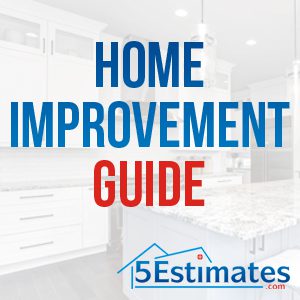
Tips for Optimal Solar Panel System Design and Installation
Investing in solar panels is a significant decision that can lead to long-term financial savings and a reduced carbon footprint. However, to make the most of your investment, it’s essential to carefully plan your solar panel system’s design and installation. In this blog, we’ll share tips to help you maximize your solar investment by optimizing your system design and ensuring a successful installation.
Assess Your Energy Needs
Before diving into solar panel system design, it’s crucial to understand your household’s energy needs. Analyze your utility bills to determine your average monthly energy consumption, and consider any changes that might affect your future energy use, such as the addition of electric vehicles or new appliances. Knowing your energy needs will help you size your solar panel system correctly.
Choose the Right Solar Panel Type
There are three main types of solar panels: monocrystalline, polycrystalline, and thin film. Each type has its advantages and disadvantages, and the best choice for your home will depend on factors such as your budget, available space, and aesthetic preferences. Research the different solar panel types to determine which one is the best fit for your needs.
Optimal Solar Panel Placement
The placement of your solar panels plays a significant role in their energy production. To ensure optimal energy generation, consider the following factors:
- Orientation: In the Northern Hemisphere, solar panels should face south to capture the most sunlight throughout the day.
- Tilt angle: Adjust the tilt angle of your solar panels to match your latitude for optimal energy production.
- Shade: Minimize shading from trees, buildings, or other obstructions to ensure your solar panels receive maximum sunlight.

Select the Right Inverter
The inverter is a crucial component of your solar panel system, as it converts the direct current (DC) electricity generated by your solar panels into alternating current (AC) electricity that can be used by your home appliances. There are two main types of inverters: string inverters and microinverters.
- String inverters: These are the most common type of inverter, connecting all your solar panels in a series. They’re more affordable but may be less efficient if some panels are shaded or have different orientations.
- Microinverters: These are installed on each solar panel, allowing them to operate independently. This setup can be more efficient in cases where shading or different panel orientations are present but tend to be more expensive.
Choose the right inverter for your system based on your budget and the specific conditions of your installation site.
Plan for Energy Storage
Integrating energy storage into your solar panel system can help you achieve energy independence and ensure a reliable power supply during grid outages. Consider adding a battery storage system to store excess solar energy for use during cloudy days or nighttime hours.
Hire a Reputable Installer
Proper installation is crucial for the performance and longevity of your solar panel system. Make sure to hire a reputable, experienced installer who is certified by organizations such as the North American Board of Certified Energy Practitioners (NABCEP). Don’t hesitate to ask for references and read reviews before making your decision.

Obtain Necessary Permits
Before beginning the installation process, you’ll need to obtain the necessary permits from your local government. Your solar installer should be able to help you navigate the permitting process and ensure that your system meets all local codes and regulations.
Monitor Your System’s Performance
Once your solar panel system is installed, monitoring its performance can help you identify any issues and optimize its energy production. Many solar panel systems come with monitoring software that allows you to track your energy generation and consumption in real time.
By following these tips and carefully planning your solar panel system design and installation, you can maximize your solar investment and enjoy long-term benefits. A well-designed and properly installed solar panel system can significantly reduce your energy bills, increase your home’s value, and contribute to a greener, more sustainable future.
Remember that maintaining your solar panel system is essential for its optimal performance and longevity. Schedule regular inspections and cleanings to ensure your panels remain in top condition and continue to produce clean, renewable energy for years to come. Investing in solar panels can be a life-changing decision that benefits both your wallet and the environment. By carefully considering your energy needs, choosing the right solar panel type, optimizing placement, selecting the appropriate inverter, planning for energy storage, hiring a reputable installer, obtaining necessary permits, and monitoring your system’s performance, you can maximize your solar investment and enjoy the benefits of clean, renewable energy for years to come.

How Much Will Solar Panel Installation Cost?
Understanding the cost of solar installation is an essential factor when considering your solar investment. The overall cost depends on several factors, including the type and size of the solar panel system, equipment, labor, permits, and potential incentives. In this section, we’ll break down the different costs associated with solar installation.
Solar Panel System Cost
The cost of the solar panel system itself is a significant part of the overall installation cost. As mentioned earlier, different types of solar panels come with varying price tags. Here’s an approximate cost range for each type of solar panel:
- Monocrystalline solar panels: $1.00 to $1.50 per watt
- Polycrystalline solar panels: $0.80 to $1.20 per watt
- Thin-film solar panels: $0.60 to $1.00 per watt
Equipment Cost
Aside from the solar panels, there are other necessary components you’ll need for a complete solar installation, which will add to the overall cost. Some of these components include:
- Inverter: $0.15 to $0.50 per watt, depending on the type (string inverters are generally cheaper than microinverters)
- Mounting hardware: $0.10 to $0.25 per watt
- Wiring and electrical components: $0.15 to $0.30 per watt
- Battery storage system (optional): $200 to $300 per kWh for the battery, plus additional costs for the required hardware

Labor and Installation Cost
The labor and installation cost can vary depending on your location, the complexity of the installation, and the company you choose. On average, you can expect to pay between $0.50 and $1.00 per watt for labor and installation.
Permitting and Inspection Cost
Permitting and inspection fees can also add to the overall cost of your solar installation. These fees vary by location, but you can expect to pay between $100 and $500 for permits and inspections.
Total Cost of Solar Installation
Taking all these factors into account, the total cost of solar installation can range from $2.50 to $4.00 per watt on average. For a 5-kilowatt solar panel system, this translates to a total cost of $12,500 to $20,000. However, it’s essential to remember that these are approximate figures and can vary depending on your specific situation.
Incentives and Rebates
Fortunately, there are federal and state incentives available that can help offset the cost of solar installation. Some of these incentives include:
- Federal Investment Tax Credit (ITC): A tax credit that allows you to deduct 26% of the cost of your solar panel system from your federal income taxes (scheduled to step down to 22% in 2023)
- State and local incentives: These vary by location, but may include rebates, tax credits, or other financial incentives for solar installations
- Net metering: A billing arrangement that allows you to receive credit for any excess electricity your solar panel system generates and sends back to the grid
By factoring in these incentives, you can significantly reduce the net cost of your solar installation, making it a more affordable and attractive investment. To get the most accurate estimate of your solar installation cost, it’s essential to get quotes from multiple reputable solar installers in your area. By comparing these quotes and taking into account the available incentives, you can make an informed decision on the best solar installation for your home and budget.

Leave a Reply